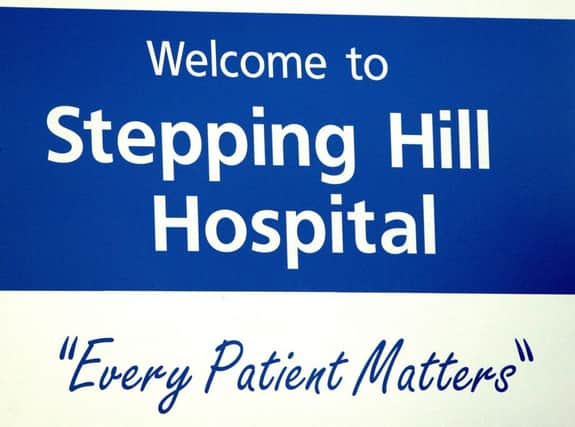Killer nurse poisoned 21 NHS patients, court told


Victorino Chua, 49, also altered the dosages on prescription charts while working as a staff nurse at Stepping Hill Hospital in Stockport, Manchester Crown Court heard yesterday.
In all, 21 patients suffered as a result of his “handiwork”, including the three he allegedly murdered – Tracey Arden, 44; Arnold Lancaster, 71; and Derek Weaver, 83 – jurors were told.
Advertisement
Hide AdAdvertisement
Hide AdChua, a Filipino who first came to the UK in 2002, sat in the dock listening as Peter Wright QC began outlining the prosecution case.
He has pleaded not guilty to 36 charges, including three alleged murders, one count of grievous bodily harm with intent, 23 counts of attempted grievous bodily harm, eight counts of attempting to cause a poison to be administered and one count of administering a poison between 2011 and 2012.
Mr Wright said that, following a massive police investigation, a “pattern” began to emerge and the killer was identified.
He told the jury: “The pieces of the forensic jigsaw began to emerge. The person responsible for each of these matters became increasingly clear. It was, we say, Victorino Chua.
“As the investigation intensified, the common denominator, the defendant, was shown in sharper and sharper relief.”
He said the prosecution’s job was to prove Chua was responsible, not to say “what caused him to turn from a man who had dedicated his life to caring for others, to harming them”.
He continued: “In the vast majority of cases, the poisoner seem to have contaminated products or altered prescription dosages completely at random. It was therefore a lottery as to who was treated with contaminated products and who was not.”
Opening the case, Mr Wright said: “In the summer of 2011, during the months of June and July, a poisoner was at work on two wards at Stepping Hill Hospital.
Advertisement
Hide AdAdvertisement
Hide Ad“Someone was deliberately contaminating healthcare products on two particular wards.
“The poisoner was contaminating these products with insulin and was doing it in order to cause really serious harm to the unsuspecting patients subsequently treated with them.
“Twenty-one patients suffered in consequence of the poisoner’s handiwork. In three of these cases it resulted in their death, in another it caused serious brain injury.”
Mr Wright said that, after the spate of poisonings, security measures were put in place and the poisoner changed his methods. In January 2012, someone altered the notes of patients to increase the dosage of various drugs. Some of this was “crudely” done, for example by changing a “30” to “80” and a “1” to a “7”.
Seven patients had their prescriptions changed but only one was given an increased dosage before the alterations were discovered. Chua was on duty when the prescriptions were altered and a partial print of his palm was found on one of the medical notes involved.
He had also “inexplicably” tried to persuade another patient to take medication not prescribed to her and worked on a ward just before the first incident when a patient fell ill from poisoning.
Chua, the jury heard, had the opportunity to contaminate the products with insulin, then leave them “ticking away” on a ward to be used “wholly innocently” by “unsuspecting” members of staff on patients who would then suffer hypoglycaemic episodes, when blood sugar levels drop dangerously low.
The jury heard that the “preponderance” of such incidents seemed to follow Chua around. Chua, who is married with two children, was born in the Philippines and left school at the age of 17, before graduating with a nursing degree in Manila in 1989.
In February 2002, he came to the UK on a temporary two-year work permit, working in nursing homes. He became a registered nurse in 2003 and a naturalised UK citizen in 2008.
The case continues.